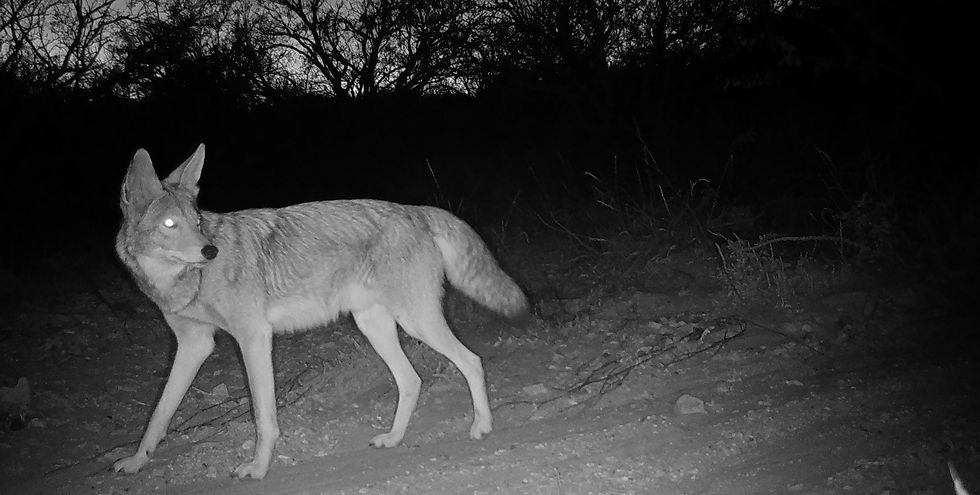Turning a New Leaf
- Aspen Thies
- Oct 20, 2023
- 2 min read
Updated: Nov 20, 2023
My name is Aspen Thies, the Watershed Restoration Program Coordinator at BRN and have recently been given the opportunity to manage our wildlife cameras and write blogs for the Borderlands Wildlife Preserve (BWP).
I earned my Bachelor's degree in Fish, Wildlife, and Conservation Biology from Colorado State University in 2021, and have been working in BRN’s Watershed Restoration Program (WRP) since 2022. I have always been fascinated by wildlife and enjoy spending time in nature. Growing up in Casa Grande, AZ and moving to Tucson in high school, the Sonoran Desert has always been my home and I am so grateful I spend my days helping restore the landscape. Now, I am especially grateful to have the chance to look more intimately into the lives of our local wildlife, and share news and thoughts about our region’s unique biodiversity, landscape, and challenges.
The WRP does a lot of behind-the-scenes work building erosion control structures throughout southeastern Arizona. These structures are often in rural or remote areas not often seen, but they have a large impact on restoring physical processes that have been exacerbated by human activity. These rock structures are built in channelized drainages that are affected by accelerated erosion, and help capture sediment and rebuild the channel to a more natural level. Water availability and infiltration then increases, carbon and nutrients are sequestered, and seed balls made by Borderlands Nursery & Seed, our native plant program, help revegetate these areas. All of these efforts help improve habitat quality and resource availability for wildlife, as well as the larger watershed the preserve and Patagonia fall within.

We have done quite a lot of work at the BWP and it is rewarding to see wildlife using an area we have helped restore. It’s also a great way for the crew to show off our work! We have built a handful of large zuni bowls along the Cross Corridor Trail to stop headcuts from traveling further and destroying the trail. These projects help slow down the erosive force of water and help sediment retention, and also ensure people can safely enjoy the preserve just as much as the wildlife does.

I look forward to sharing photos from the preserve, updates on our restoration work, and my admiration for all things wild! Here are a couple of my favorite pictures from the first batch of photos I have sorted through from our wildlife cameras.







Comments